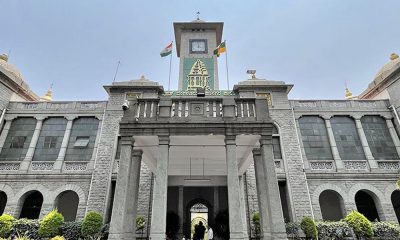Ad Policies & Regulations
BBMP approves new ad policy, bans hoardings in city
The draft policy provides for advertising on bqs, skywalks, public transit stations, pre-defined areas in the city, pedestrian zones, street furniture, public parks, etc.
 The Bruhat Bengaluru Mahanagara Palike (BBMP) Council in its meeting held on August 28 has approved a new draft advertising policy entitled ‘BBMP Outdoor Signage and Public Messaging, 2018’ that provides for a ban of all illegal commercial billboards and hoardings in the city of Bengaluru. However, the Council has provided for exceptions to pedestrians-only zones and areas like Brigade Road where the ad displays may be permitted. Such places will be pre-defined subject to the evaluation of a review committee appointed for the purpose.
The Bruhat Bengaluru Mahanagara Palike (BBMP) Council in its meeting held on August 28 has approved a new draft advertising policy entitled ‘BBMP Outdoor Signage and Public Messaging, 2018’ that provides for a ban of all illegal commercial billboards and hoardings in the city of Bengaluru. However, the Council has provided for exceptions to pedestrians-only zones and areas like Brigade Road where the ad displays may be permitted. Such places will be pre-defined subject to the evaluation of a review committee appointed for the purpose.
Also, the ban will not apply on advertising and branding on skywalks, public transit stations, bus queue shelters, and car-share and bike-sharing stations where firms have invested in advertising rights in advance, as reported by Times of India.
Meanwhile, BMRCL and BMTC are seeking clarifications on whether the new policy will affect the advertising on the Metro pillars and in stations, as also at the BMTC bus terminals and on the exterior of buses. As such, where the ad firms have been involved in any PPP projects, their media will be not subject to the ban.
The new policy permits signs painted on vehicles operated and stored in the normal course of business, like signs on delivery trucks, promotional vehicles, moving vans, rental trucks, provided they are parked or stored in areas related to their use as vehicles and all vehicles are in operable conditions.
The policy also permits commercial advertising on public park signboards, recreation grounds, street furniture, public toilets, street kiosks, public art, etc. Inside of pedestrian bridges and tunnels may also be used for advertising displays.
In addition, temporary banners not exceeded the stipulated size, may be permitted on non-residential, non-commercial private and public land, in accordance to time periods laid down in the bylaws.
The policy allows for public messaging by government on public land, in accordance with guidance under bylaws which mandate that they must be for awareness programmes. Also, temporary banners will be allowed on buildings only for non-residential use, limited to a maximum of one per structure for a limited time period.
The policy has, apart from banning commercial hoardings anywhere in the city, banned roof signage and hoardings above roofline, dynamic electronic displays against municipal right of way, flashing or animated signs (except permitted electronic public message signs), audio on outdoor displays, sequential messaging, gantries (to be used only for traffic directions), balloon or inflated signs, wall facades, signs on trees, mobile signs, vehicle signage where the vehicle is used only for branding purposes.
It emerges that there was opposition to the policy allowing for advertising in pre-defined areas, and advertising on skyways, bqs, etc. These will come up for discussion in the coming days.
BBMP had to be out with the policy as per the High Court of Karnataka order that set August 31 as the deadline for the same. The policy will now be open to evaluation and consultations for a month before it is sent to the Karnataka Government for ratification.
Looking ahead, even as curbs are placed on traditional large formats, there is evidently significant scope for the OOH industry to develop new formats that are in tune with the city development and aesthetics.























